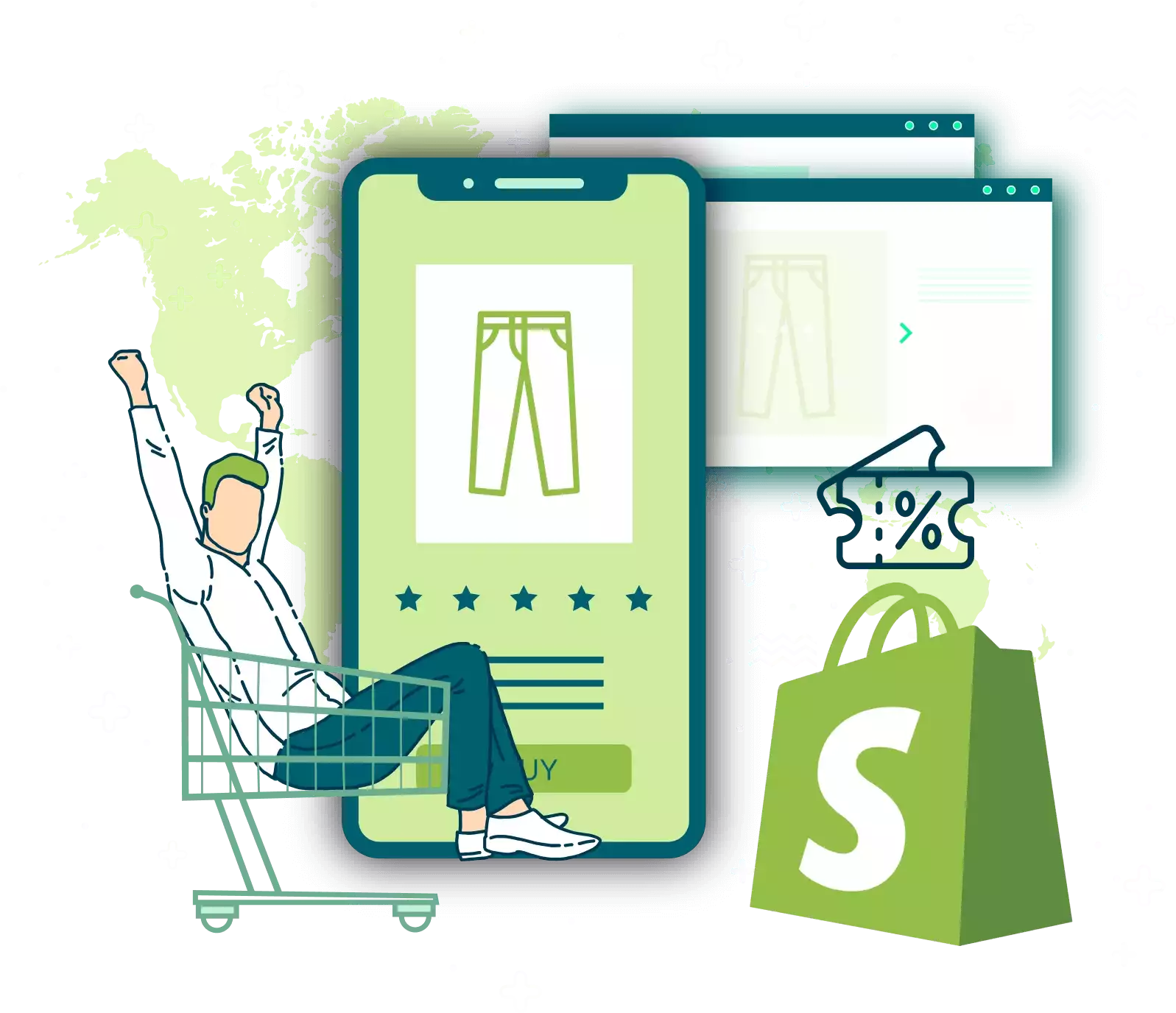
Introduction
In the current highly competitive e-commerce landscape, Shopify merchants are constantly seeking methods to increase revenue and optimize their operations. A highly effective approach is through tailored Shopify apps customized to address specific requirements. Connecting with the Shopify API and leveraging tools like the Polaris design system, such applications empower businesses to scale efficiently while enhancing customer engagement. In this blog, we’ll explore key aspects of Shopify app development, from design considerations and essential features to best practices for maintaining and scaling apps effectively.
1. Understanding Shopify API Linkage
A comprehensive grasp of Shopify’s API—both Representational State Transfer and Graph Query Language—is essential for creating robust Shopify applications. With these interfaces, engineers can fetch, update, and administer details within a Shopify shop. The GraphQL API offers optimized data management, allowing for speedier replies by fetching only the necessary elements. Connecting the API allows app creators to customize app functionality to the business’s unique needs, offering a smooth UX that enhances business productivity and revenue.
2. Leveraging the Polaris Design System
Shopify’s design system assists programmers to build a consistent and easy-to-use experience across Shopify applications. Polaris offers a set of elements and best practices that complement Shopify’s visual standards, ensuring apps appear native within the Shopify interface. This approach goes beyond supports smooth user interactions but also aids maintain visual identity, an essential component in building credibility with users.
3. Developing within the Shopify App Ecosystem
The Shopify app ecosystem is broad, allowing programmers to create integrated Shopify applications that work within a store's admin panel. Integrated applications optimize the customer journey by incorporating directly within Shopify’s dashboard, cutting down on the requirement for distinct sign-ins or further browsing. For developers, employing Node.js for behind-the-scenes tasks and React for the user interface has grown into a popular choice, as such tools facilitate scalable, adaptive programs that provide an high-quality UX.
4. Core Features for Shopify Apps
A effective Shopify app needs features that resolve important pain points in the customer shopping experience. Real-time alerts for immediate alerts, custom theme customization options, and multi-platform sales options are essential elements that can boost operational control and customer experience. By adding these features, Shopify apps don’t just optimize in-house tasks but also boost the shopper's journey.
5. Best Practices for Application Building
When building Shopify applications, it’s essential to follow app development with Oyecommerz optimal techniques. Upkeep methods such as regular updates, customer support, and security patches are necessary for sustaining user trust. Promotional efforts for Shopify apps can also be utilized to boost app visibility and adoption. Customer engagement tactics, such as push notifications and loyalty programs, are essential for retaining users and creating a dedicated following.
6. Expanding Shopify Applications for Growth
As Shopify shops grow, scaling apps becomes essential to handle greater usage and feature requests. Adopting cloud-based setups and emphasizing efficient data handling through Graph Query Language can support applications grow without performance issues. It’s equally important to have a roadmap for expanding the app’s infrastructure to support increased demand, that involves a list for choosing a development partner with experience in Shopify applications.
7. Evaluating the Cost of Developing Shopify Applications
Building custom Shopify applications can differ widely in cost depending on the capabilities, connections, and personalization required. Fundamental elements like API integrations, customer engagement tools, and online reach options can increase expenses. However, the profit potential is often valuable, as these apps can significantly improve sales and streamline workflow.
8. Support Plans
Maintaining an app is equally necessary as creating it. Regular updates to resolve errors, improve security, and maintain integration with the latest Shopify platform updates are important. Forward-thinking upkeep methods also feature user assistance and feature enhancements that keep up with evolving e-commerce trends.
9. Platforms for Developing Shopify Apps
Shopify supplies a variety of resources to simplify the app-building journey, from app development frameworks like Node.js and React.js framework to Webhooks for immediate changes. Tools like Shopify’s CLI simplify the app creation path, while Shopify App Bridge enables integrated applications to interact seamlessly with Shopify’s control panel. These options are invaluable for building applications that are both operational and user-friendly.
10. Upcoming Innovations in Shopify App Development
The prospects of Shopify app creation is bright, with innovations heading in the direction of artificial intelligence capabilities, improved cross-channel functionality, and improved app extension options. As digital retail develops further, developers will be required to anticipate the changes to develop solutions that go beyond meet but surpass market demands.
Final Thoughts
Custom Shopify apps provide a managing app performance effective solution for digital retailers to expand with ease, boost sales, and streamline operations. From API integration and the design standards to core elements and support methods, each aspect of Shopify app development plays a crucial role in providing a smooth interaction for shoppers. As Shopify moves forward, keeping up with future trends in app development will help developers fully utilize Shopify’s extensive platform, reinforcing their standing in the online shopping landscape.
Comments on “Increase Sales and Productivity with Personalized Shopify Applications Designed to Grow”